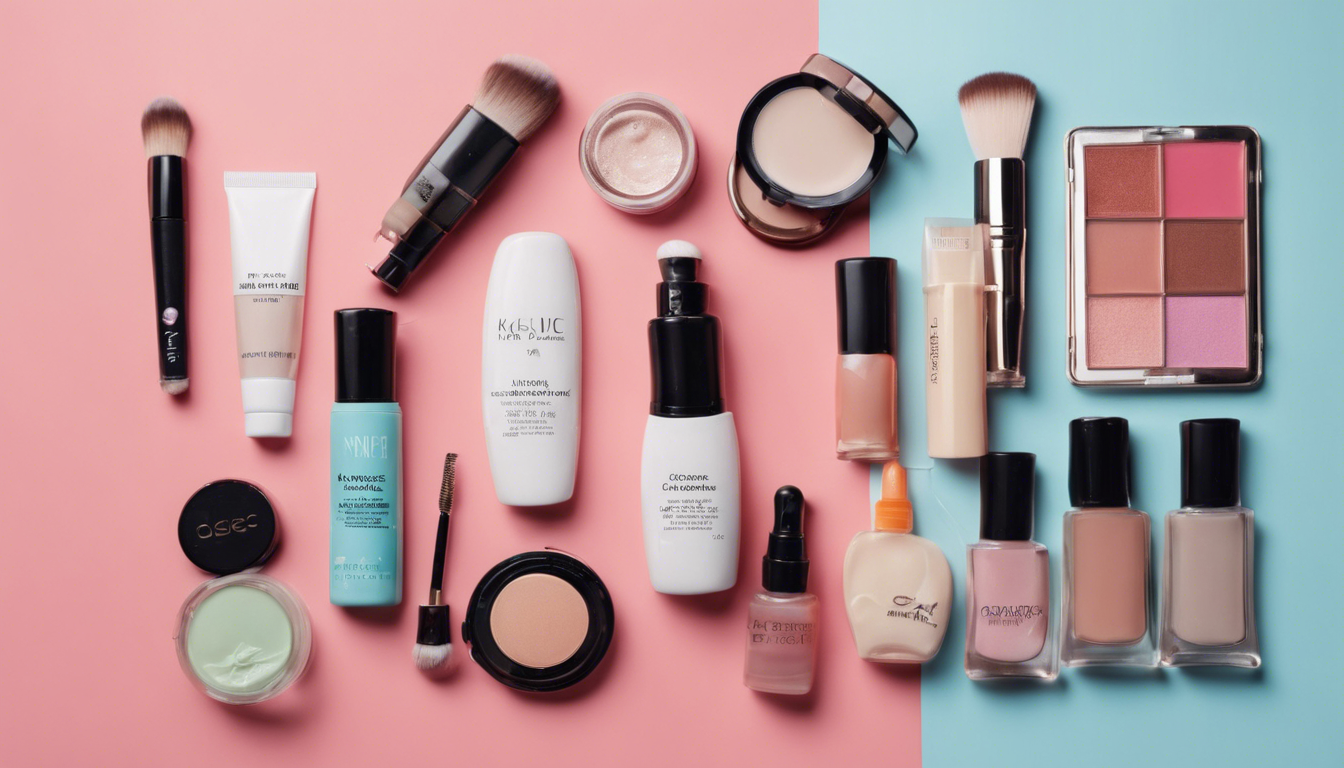Finally, the love-hate relationship with summer has arrived. As the brilliant sunshine and rising temperatures come hand in hand, we face the onslaught of sweat, UV rays, and excessive oil production. It seems like a summer skin “uprising” is brewing.
Things You Should Not do When Making Skin Care During Summer
However, no matter how hot and stuffy it gets, there are some things you just shouldn’t do!
For instance, stepping into an air-conditioned room with a bare face right after a shower, hoping to feel the coolness in every pore, only to have your skin dry out quickly;
Or, fearing greasiness, you only use water, but your face keeps producing oil non-stop;
Or, in a desperate attempt to avoid looking shiny, you overdo it with oil-control powder, only to end up with cakey makeup!
Determine Your Skin Type
Summer can make already imperfect skin conditions even worse!
First, “know yourself and your enemy” to “win every battle.”
Determine your skin type to address your skin’s needs accurately.
Take a gentle amino acid cleanser and observe your skin 30 minutes after cleansing.
Dry skin: feels tight, flaky, and dry.
Oily skin: becomes shiny and oily.
Combination skin: the T-zone becomes oily while other areas feel tight, flaky, and dry.
Normal skin: feels balanced, neither tight nor oily.
Compared to autumn and winter, summer’s UV rays are stronger.

Sun Protection is the Top Priority in Summer
The most effective sun protection method is using sunscreen along with physical barriers. So, gear up with sun-protective clothing, hats, and umbrellas!
Choose different sunscreens based on your skin type:
For normal and oily skin: opt for sunscreen lotions or lightweight, clear chemical or hybrid sunscreens to minimize pore clogging and acne.
For dry and sensitive skin: choose richer, oil-based physical sunscreens. Test on a small area like the ear or neck first to check for reactions before applying more broadly. For hard-to-reach areas, consider using sunscreen sprays.

Choosing Right Cosmetics
Be cautious with products labeled “renewing,” “revitalizing,” or similar terms.
Cosmetic products with terms like “renewing,” “revitalizing,” “youth-enhancing,” or “exfoliating” often contain acids such as fruit acids, citric acid, salicylic acid, or lactic acid. Frequent use of these can make your skin feel soft and smooth but can also damage your skin barrier over time. Use them sparingly.

Pay attention to shelf life of your cosmetics
Always use them within their expiration dates and purchase from reputable sources. Cosmetics have a shelf life after opening. Some products are labeled with “3M” or “6M,” indicating they are best used within 3 or 6 months after opening. Always pay attention to these dates and use the products within their effective period.
Many people prefer expensive cosmetics, but the most expensive ones aren’t always the best. Be cautious with online purchases, paying attention to quality and not blindly believing in advertised effects. It’s best to buy from reputable offline channels and avoid unbranded products. Choose established brands.
Opt for pump packaging when possible
Cosmetics can easily get contaminated. Products with pour-out or scoop-out packaging can collect dust and other contaminants. Always ensure your hands are clean when using them.
Cleansers Are Crucial
Avoid using alkaline soaps to wash your face as they can damage your skin barrier. Sensitive skin types should choose gentle products like amino acid cleansers. Those with very oily skin can opt for foaming cleansers for a deeper clean.
How to Properly Wash Your Face
Washing your face is the first and most crucial step in your skincare routine. However, over-cleansing can lead to skin issues such as redness, heat, spots, and breakouts.
The Best Way to Wash Your Face: Water + Tower
Those cleansers, makeup removers, and cleansing devices aren’t as essential as you might think. Cleansers Don’t Need to Be Used Daily.
For Basic Skincare Without Makeup:
- Very Dry Skin, Sensitive Skin, Red or Overheated Skin: Avoid using cleansers.
- Dry Skin: Use non-foaming or minimally foaming cleansers, and try to use them sparingly, about once every 1-2 weeks.
- Normal Skin: Use non-foaming or minimally foaming cleansers 1-2 times a week, focusing mainly on the T-zone where oil is more prevalent.
- Oily Skin: Choose oil-control cleansers, which are typically more foamy. If your skin is very oily, cleanse once daily, focusing on the T-zone and using a small amount on the cheeks. If oil production is less, cleanse every other day or 2-3 times a week.
- Combination Skin: Use two different cleansers for different areas (T-zone and U-zone). For oily T-zone areas, use an oil-control cleanser every other day. For other areas, use a mild cleanser occasionally.
For Makeup Removal:
- Light Makeup (Low SPF Sunscreen, Light Foundation, Lipstick, Eyebrow Pencil): You can skip the cleanser and just use a towel soaked in water to wipe your face several times.
- Waterproof Foundation, BB Cream, CC Cream, Primer, High SPF Sunscreen: Use a small amount of cleanser or start with a gentle makeup remover followed by a cleanser, and finish with a water-soaked towel to remove both the makeup and the cleansing products.
- Heavy Makeup: Use cleansing oil followed by a cleanser.
- Before applying cleansing oil, ensure your hands and face are dry. Apply an amount of cleansing oil about the size of a coin to your face and gently massage in circular motions with your fingertips for about one minute to dissolve makeup and impurities.
- Wet your hands and repeat the circular motions to emulsify the oil, turning it white, and then massage for another 20 seconds. Finally, rinse thoroughly with plenty of lukewarm water. If you feel any residue, follow up with a cleanser.

